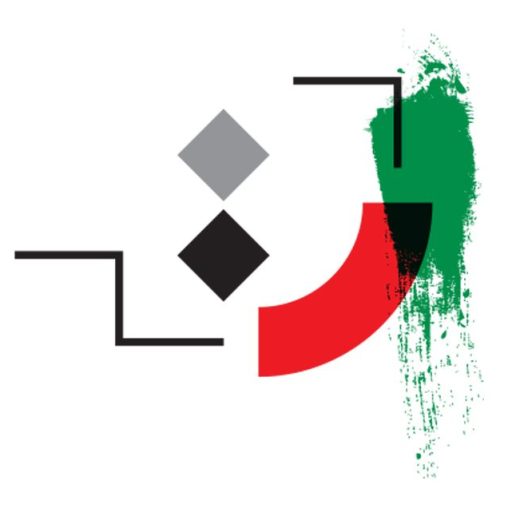Mohammad Mansour Falamaki
Biography
Dr. Mohammad Mansour Falamaki
Born: 1934, Mashhad, Iran
Position: Assistant Professor of Architecture
Email: moh.falamaki@iauctb.ac.ir / mansourfalamaki@hotmail.com
Current Address: Department of Architecture, Faculty of Arts and Architecture, Islamic Azad University, Central Tehran Branch, Tehran, Iran
Dr. Mohammad Mansour Falamaki is a prominent Iranian architect, scholar, professor, and author, renowned for his significant contributions to the fields of architectural theory, restoration, and urban design. Born in 1934 in Mashhad, Iran, he pursued higher education in architecture and obtained his Ph.D. in Architecture from the University of Venice, Italy, in 1963. He further enriched his academic background with a certificate in Urban Planning from the University of Milan and a diploma in the Restoration of Historic Buildings and Cities from the University of Rome.
After returning to Iran, Dr. Falamaki began his academic career as a faculty member at the Faculty of Fine Arts, University of Tehran, where he served as an assistant professor from 1969 to 1975 and continued as a full professor afterward. He also taught at other prestigious institutions, including the University of Farabi in Isfahan, Al-Zahra University, Technion Nafis Institute, the Islamic Azad University of Tehran, and the University of Art in Kerman.
Academic and Professional Contributions
Dr. Falamaki is a distinguished figure in both academia and practice. He has been actively involved in architectural restoration and urban development projects across Iran. Notable roles include:
- Head of the restoration project of Qara Kelisa (St. Thaddeus Monastery).
- Supervisor of the Shiraz Historic Urban Fabric Restoration Plan.
- Member of the Architectural and Urban Planning Commission of the Tehran City Council.
- Senior advisor to the Central Bank of Iran on architectural research and building design.
- Restoration consultant to the Iranian Parliament and Sepahsalar Mosque & School.
He also served as the director of the Department of Architecture at the University of Tehran (1970–1971), was a longstanding member of the Faculty Board at the Faculty of Fine Arts, and served on the Academic Promotion Committee of the University of Tehran (1976–2006). Since 2006, he has been a faculty member in the Architecture and Urbanism Department at Islamic Azad University, Tehran Central Branch.
Scholarly Legacy
Dr. Falamaki is particularly known for his distinctive and intricate style of architectural writing, which contrasts with the more accessible prose of contemporaries such as Dr. Manouchehr Mazini. Despite its complexity, his work has become a cornerstone of Iranian architectural literature.
In 1983, he founded the “Faza” Scientific-Cultural Institute, dedicated to the study of built environments and the publication of research on vernacular architecture.
Dr. Falamaki has participated in numerous national and international conferences, presenting papers in Iran and abroad, including INTA (International Urban Development Association) congresses in Moscow, Rotterdam, Glasgow, London, Genoa, Paris, Belfast, Dublin, and Madrid.
Awards and Recognition
- Recognized as a Distinguished Professor in research by the Islamic Azad University, Tehran Central Branch, in 2005.
- Honored as an Outstanding Academic in Architecture by Iran’s Ministry of Science, Research and Technology in 2010.
- His house in Tehran was officially registered as a National Heritage Site in 2018 (No. 31697).
Notable Publications
Dr. Falamaki has authored and edited a wide range of books and academic papers on architecture, restoration, and urban design, including:
- Formation of Architecture in the Experiences of Iran and the West
- Reviving Historic Cities and Buildings
- Technologies of Architectural Restoration
- Urban Renewal and Revitalization
- Ideal Communal Habitat in Urban Planning
- Cultural Boundaries and Heritage in Iran
- Athenian Charter
- Farabi and the Concept of Citizenship in Iran
- Social Mobility in the Satellite Cities of Venice, Padua, and Treviso (1861–1961)
- From Venice to Shiraz: An Overview of Urban Restoration Experiences
He has also contributed to edited volumes, including:
- Tehran: A 3200-Year-Old City
- The First Cities
- Historical Buildings and Cities of Damghan
- Link Between Music and Poetry (by Hossein-Ali Malah)
- Collected Essays on Restoration
- And many others.
Video Index
Chapters:
- Childhood and Education
- Marriage and Academic Migration
- Academic Connections During University Years
- Mohammad Mansour Falamaki – Family and Academic Character
- Books and Articles – Part One
- Books and Articles – Part Two
- Executive Experience
- Saba House Project
- Restoration Project of the Moghaddam House
- Urban Restoration Project of the Old Fabric of Shiraz
- Architectural Urban Restoration Project of the Historic Fabric of Qazvin
- Urban Renewal Project of Javadiyeh Neighborhood in Tehran
- Urban Development and Historic Fabric Research Project in Eight Cities of Iran
- Management and Implementation of the Restoration of Qara Kelisa
- Academic and Cultural Contributions
- Senior Advisor to the Central Bank of the Islamic Republic of Iran
- Executive Experience in Tehran Municipality and Other Organizations
- Senior Architectural Restoration Advisor for the Projects of the National Consultative Assembly
- Fazā Institute
- Collaboration with the University of Tehran in Restoration Projects and Related Matters
- What is the Definition of Architecture?
Personal Information
- Birthday: 1934
- Birthplace: Mashhad, Khorasan, Iran
- Interview date: 04.12.2022- 14.12.2022
Specialising in the Restoration of Historical Monuments and urban planning, an Architect and University Professor
